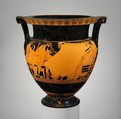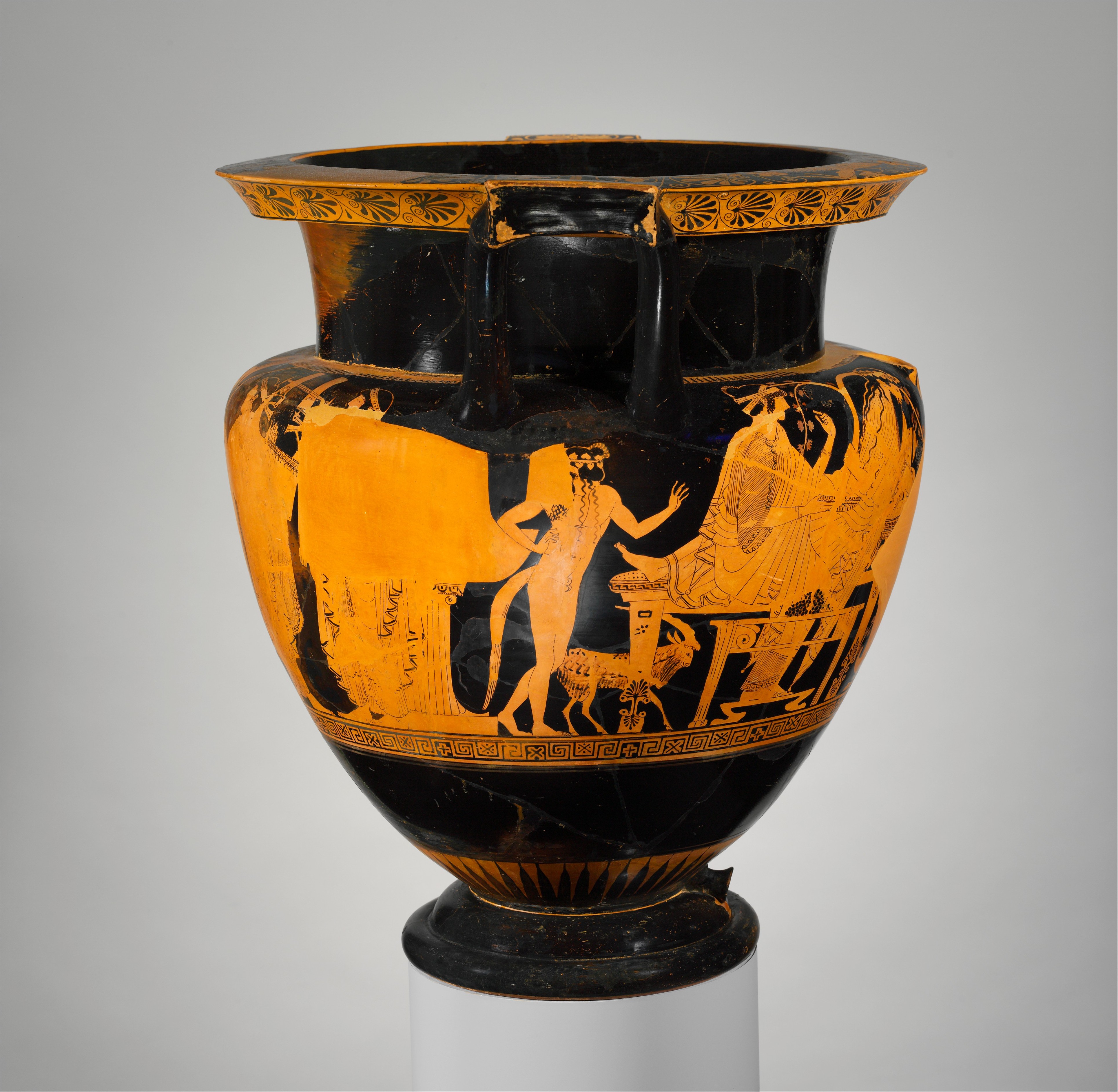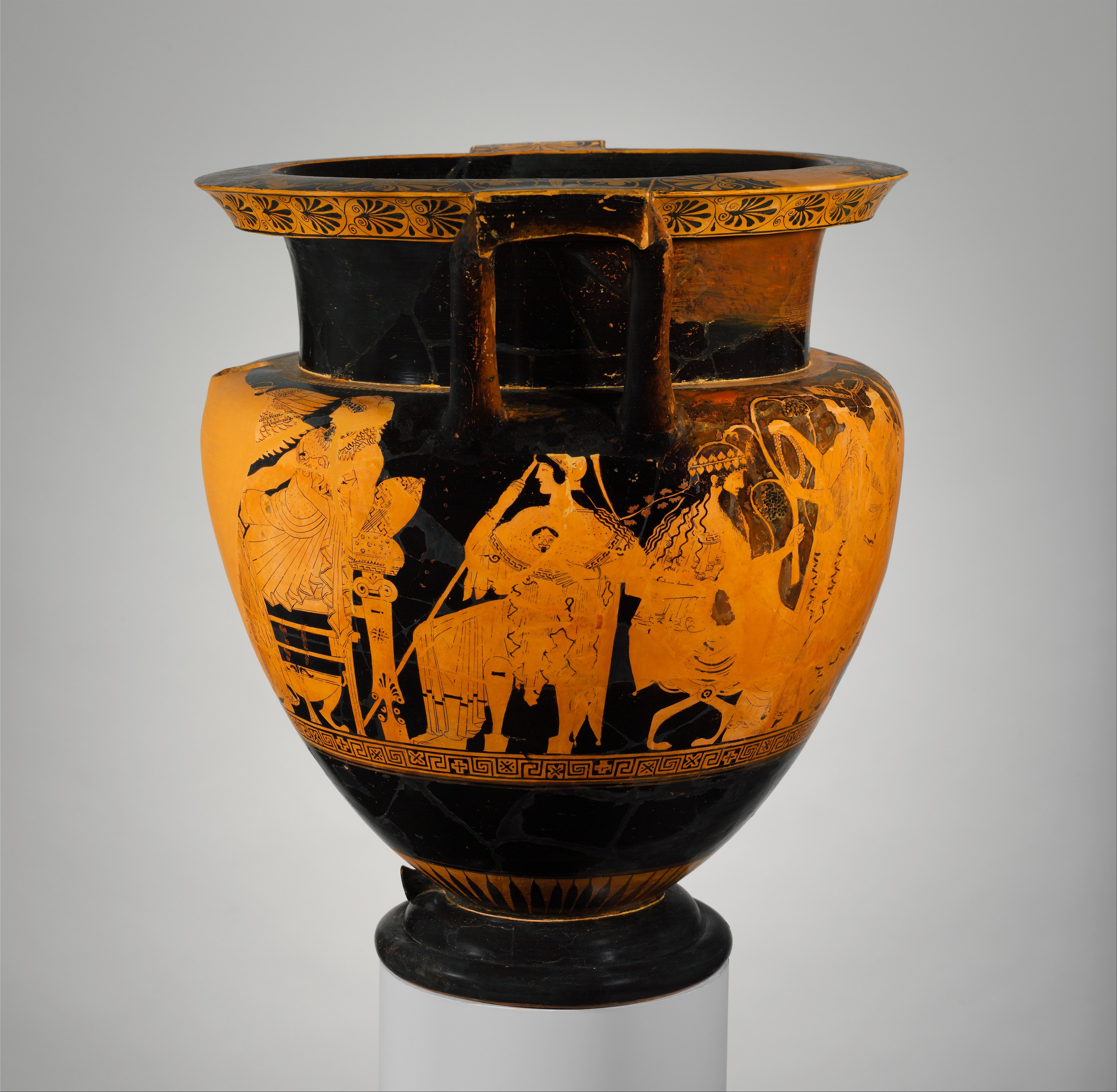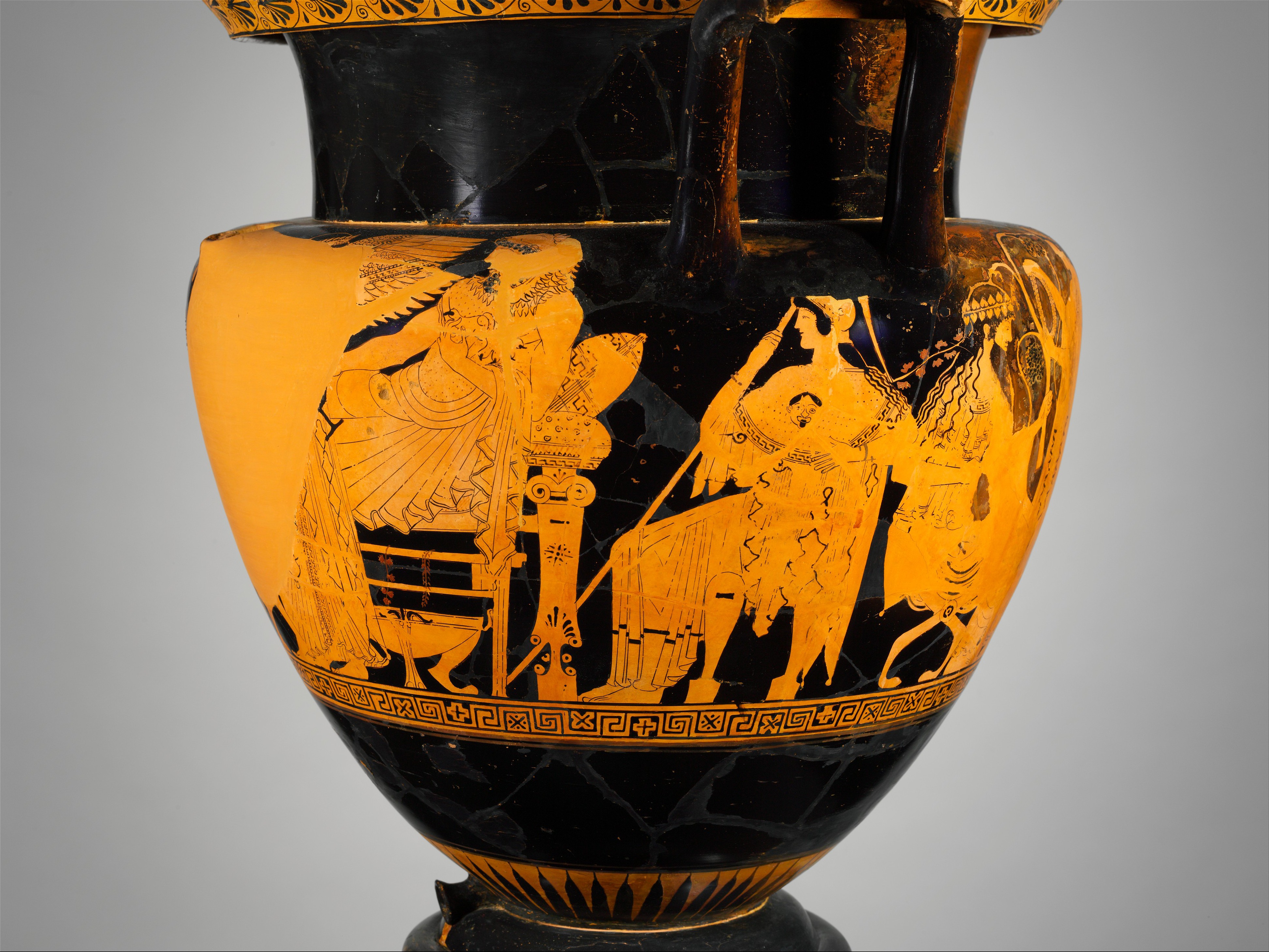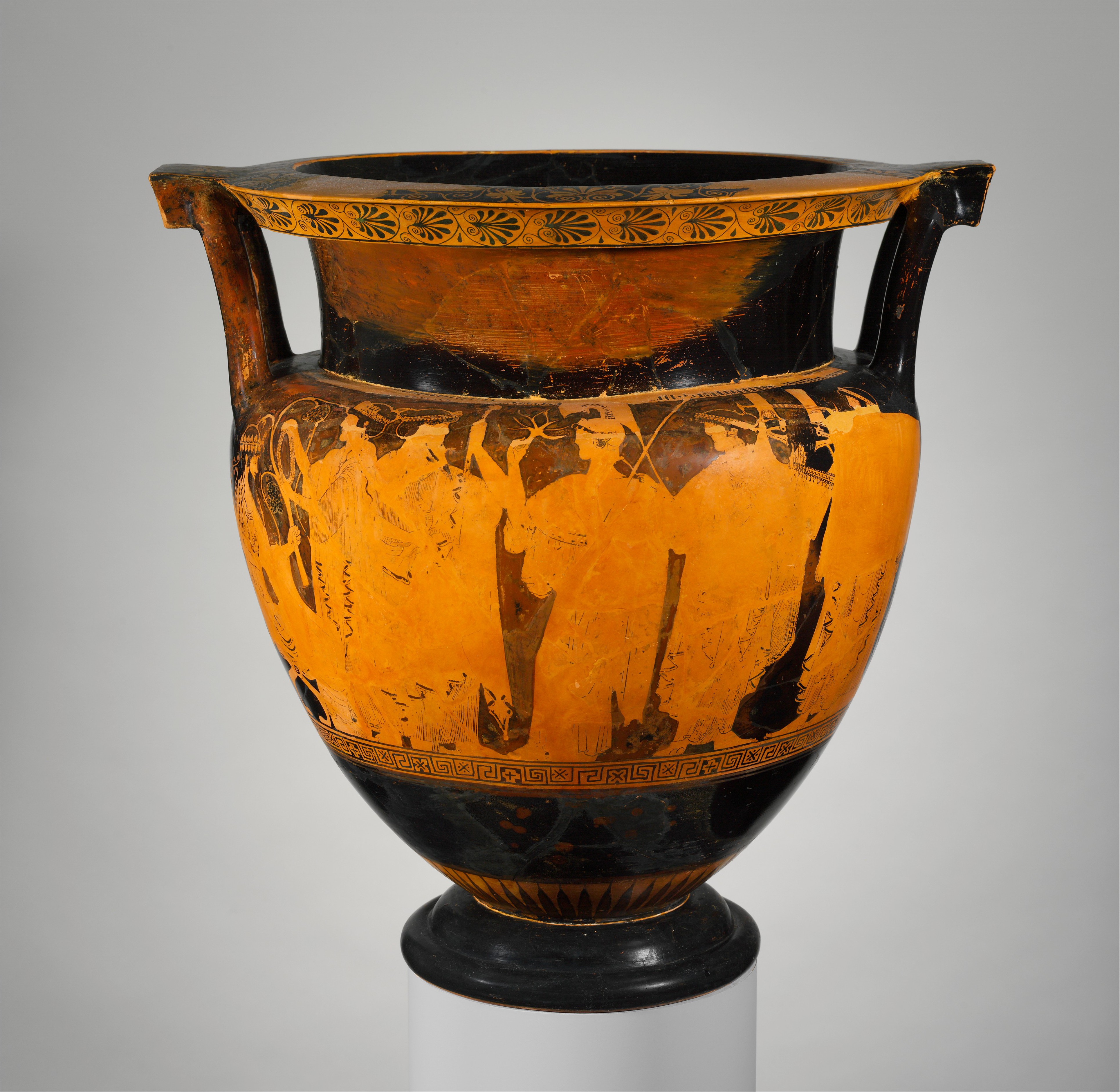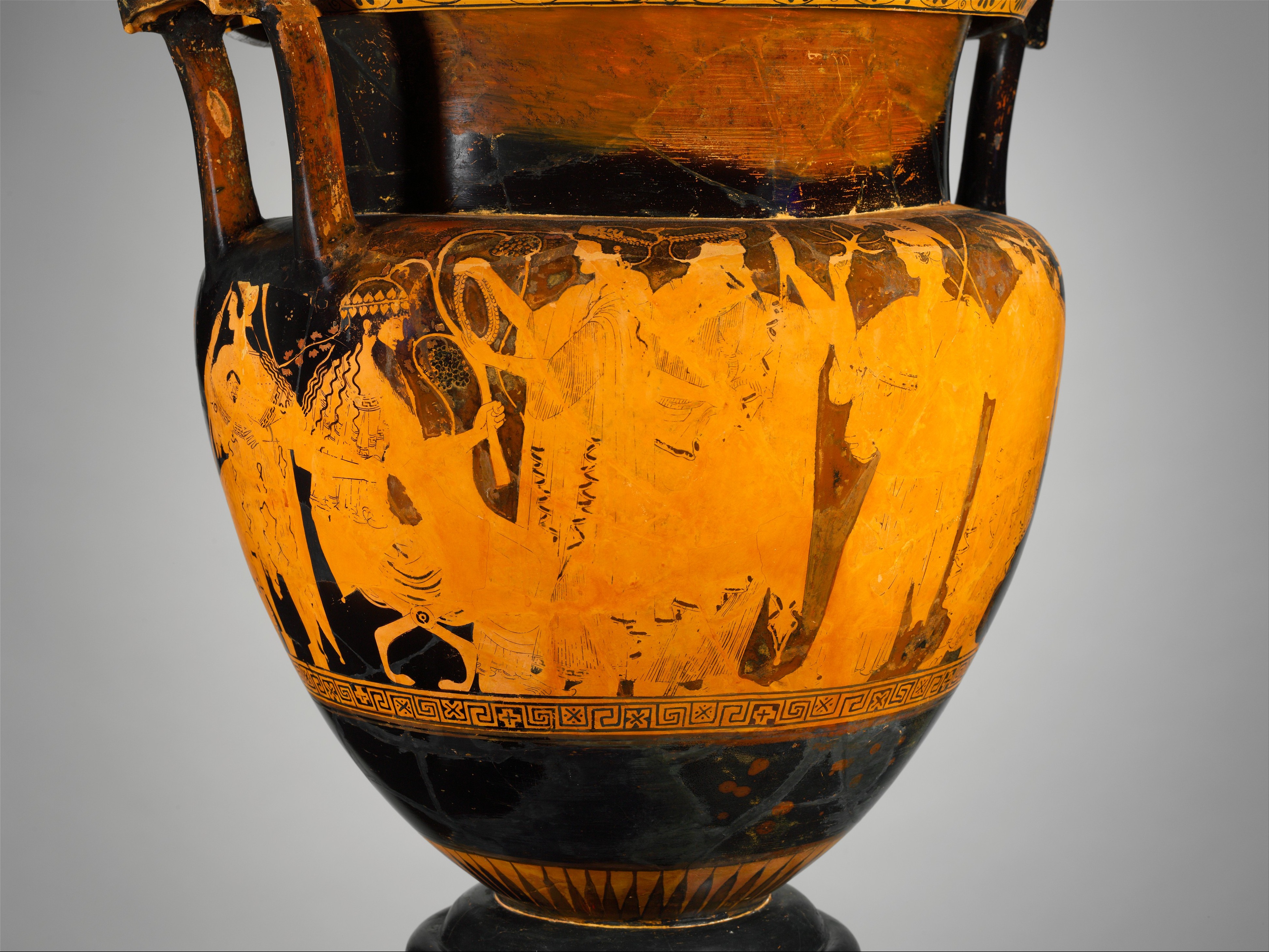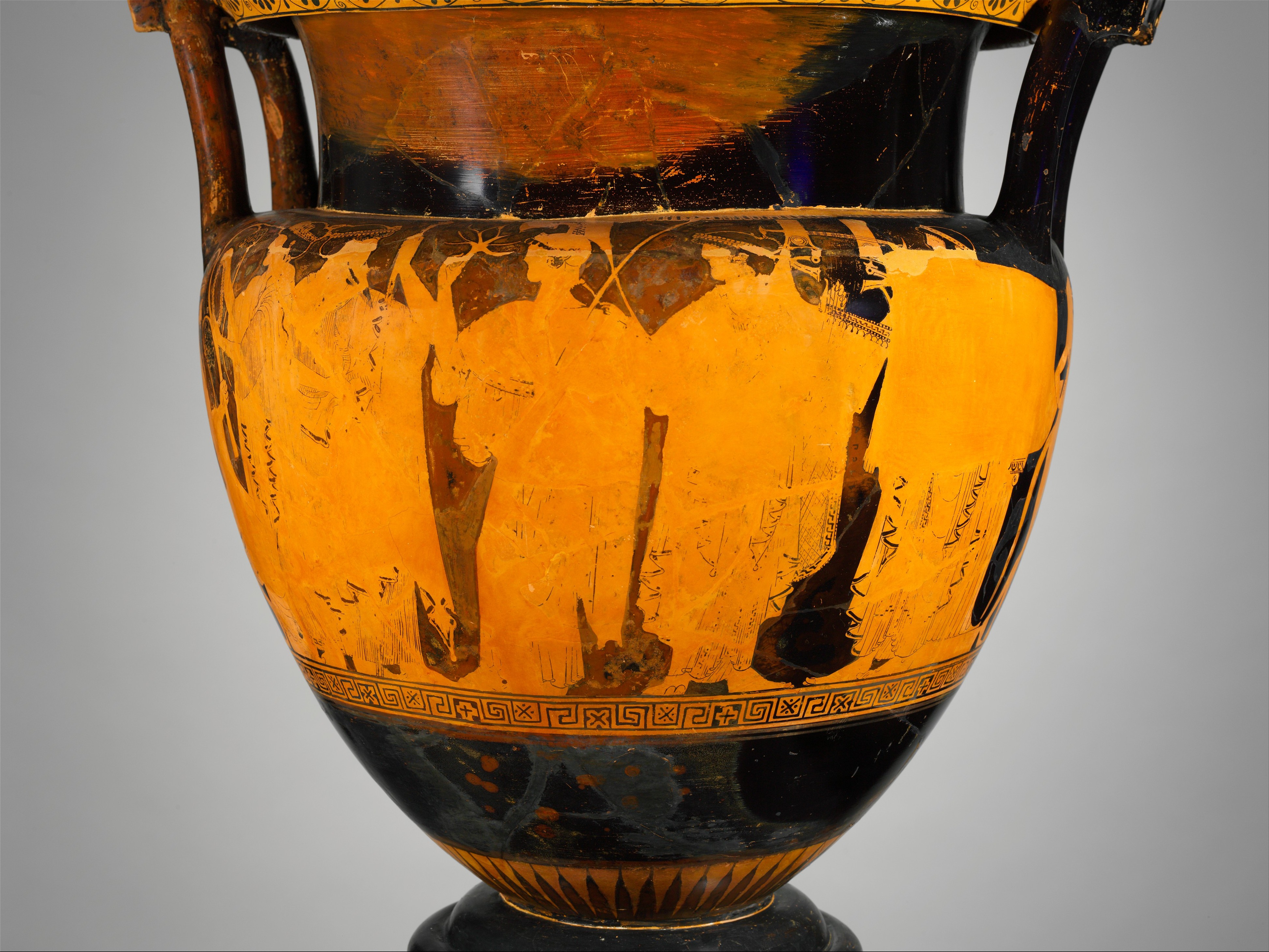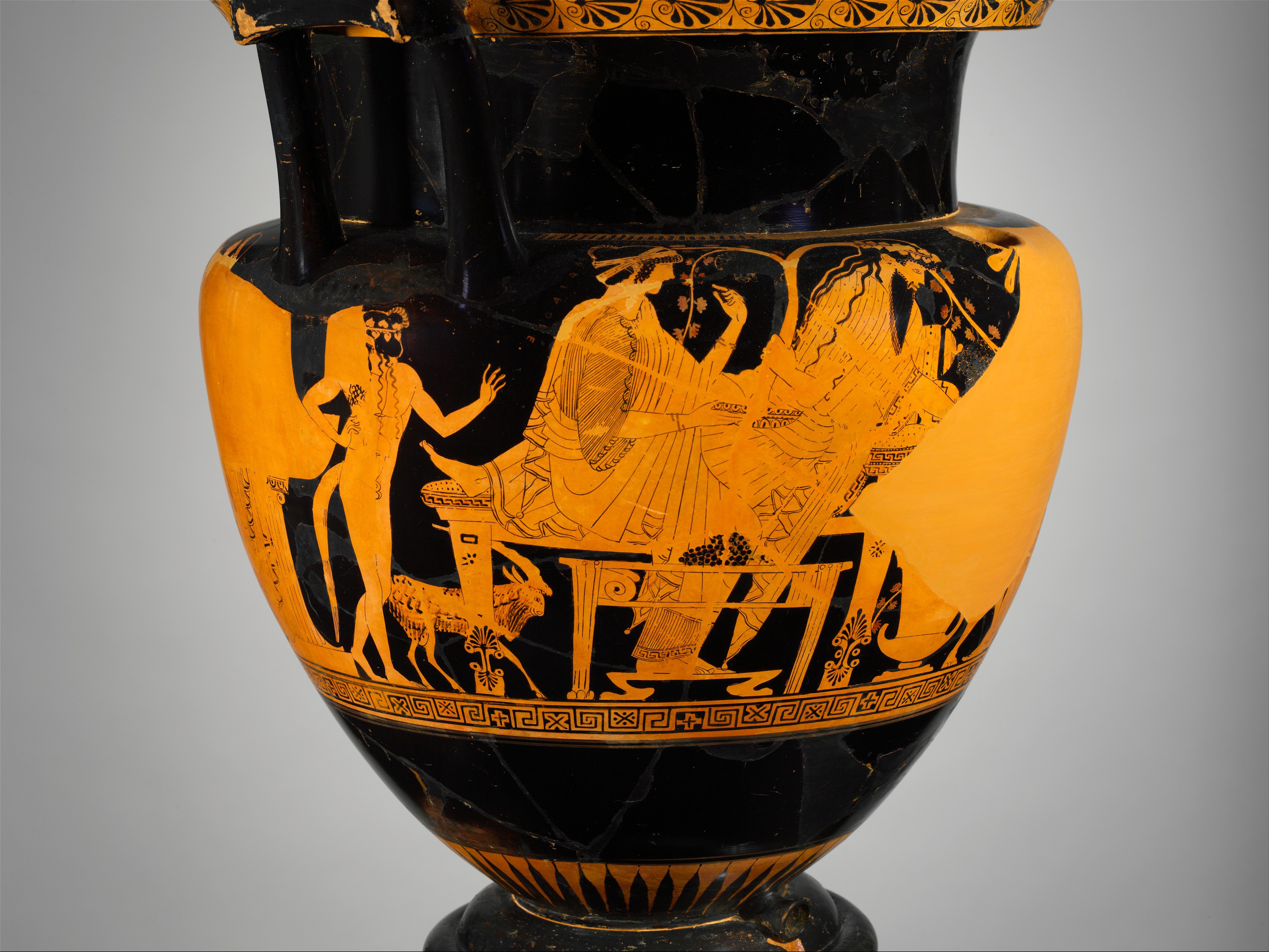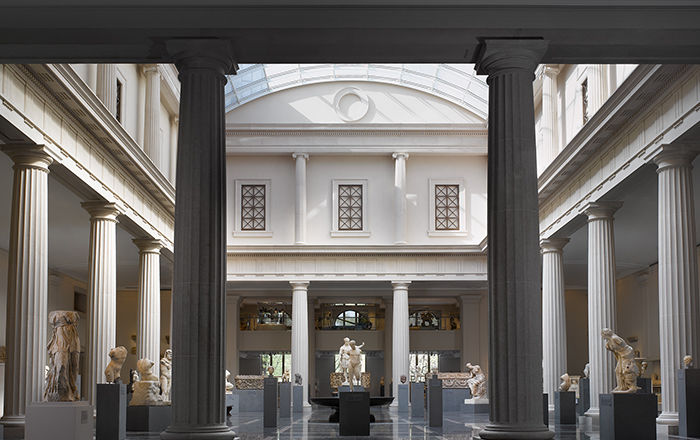Terracotta psykter-column-krater (vase for chilling and mixing wine and water)
Attributed to the Troilos Painter
Obverse, Herakles and Dionysos in Olympos
Reverse, Dionysos with Olympian deities
This vase is the only known preserved example of a combination psykter and column-krater. The psykter emerged at the end of the sixth century B.C. and had a short and rare existence. Its distinctive shape allowed it to contain wine and remain upright in a krater filled with cold water or snow. In the present piece, the krater has a double wall; openings at the top and bottom of the body allowed cold water to be poured in and to flow out.
The figural scenes show Dionysos, god of wine, and Herakles, the hero and protégé of Athena, on Mount Olympos, the home of the gods. The obverse depicts Dionysos with Ariadne and Herakles with Nike. On the reverse, Hera, Zeus, Athena, and Leto approach the seated Dionysos. Most of the names on the vase are inscribed.
This image cannot be enlarged, viewed at full screen, or downloaded.
This artwork is meant to be viewed from right to left. Scroll left to view more.
